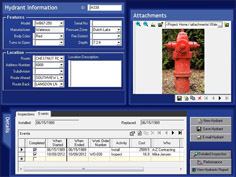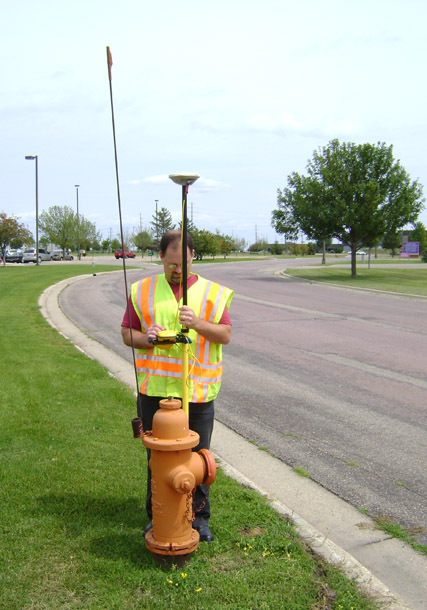Latest News
Benefits of Asset Management

By Brian D. Simmons and Mark A. Schulz
Public agencies face increasing demands for transparency and accountability while at the same time operating with a smaller staff and budget. This effect is felt across the gamut; from small municipalities to large counties and management districts. Proper asset management can support your efforts to stay on top of your agency’s crucial elements.
An asset management system is a tool--usually in the form of software--to help your agency organize, manage, and implement strategies. The fundamental goal of asset management is to preserve the service life of infrastructure, and rehabilitate or replace individual components in the most efficient way possible. A good asset management system can help your agency successfully manage operations, maintain inventories, and budgets, track the condition of an asset in the field, as well as perform long-term planning, and capture the true costs of maintaining your agency’s assets.
Because asset management can be applied to almost every aspect of agency operations, implementation can be daunting. Asset management scales to all sizes and levels of public agencies. Bringing hard assets, such as signs, hydrants, and light fixtures, into a management system, can help agencies realize immediate and tangible benefits. But the intangible items like labor, fuel expense, and equipment time are also important to a successful asset management program. It helps you understand the costs of day-to-day operations.
Asset management benefits. With tools to record asset information, location, inspections, maintenance, and historical events, infrastructure management becomes more efficient. Instant assessment of an asset can be extremely beneficial, especially in an emergency situation. A good asset management system can provide access to basic data and relevant information like record drawings, as well as provide for viewing the asset on a map, or locating it in the field with a mobile device. Having complete records of an asset is the foundation upon which advanced activities like predicting the end of usable life, or calculating the optimum point for rehabilitation becomes possible.
Tying the cost of upkeep to a particular asset provides insight into efficiencies. Reporting, mapping, and prediction tools, along with links to actual asset costs, give you compelling information to present to decision-makers when asking for project funding or justifying the need for a service or product.
Integrating these types of information into existing practices helps staff prioritize rehabilitation, replacement, and reconstruction efforts. It also helps them to determine life-cycle costs and estimate the cost of failures. In addition, workflow management tools designed for public works professionals streamline tasks by issuing work orders and tracking scheduled maintenance, and then tying completed tasks to labor and part costs.
GIS integration with asset management. Many agencies have discovered that a geographical information system (GIS) is a valuable tool, developing sophisticated datasets to manage their infrastructure. GIS falls short in managing performance and asset life cycle, but it excels in managing spatial data, and some systems even handle asset information and maintenance history. Thus, a GIS makes an ideal asset management companion, or an excellent base upon which to build an asset management system.
Choosing an asset management system that collaborates with GIS can enhance an asset management system’s spatial capabilities. Workflow management also benefits from spatial awareness, allowing it to indicate where work is being done, or needs to be done on a visually compelling map.
(Note: If your agency chooses to maintain GIS data, be sure to provide a disclaimer regarding its accuracy. Under state law, agencies are provided with immunity from claims based on public use of GIS data if a disclaimer is provided.)
City of Waconia. The City of Waconia is in its second year of asset management implementation. City leaders chose workflow management as their first priority to realize the most immediate benefits.
Public Services Director Craig Eldred had prior experience using an asset management system, and he describes leading the process of implementing a new system from the ground up as “eye opening.”
Waconia chose a system that can communicate with its financial software, and can accept their existing GIS data as the underpinning for their system.
The first order of business in Waconia’s plan was to start using work orders to assign work, while requiring staff to track time for various tasks. Staff enters their timesheet information directly into the asset management system, which passes off the pertinent information for payroll processing to their financial software.

Tying the newly tracked divisions of labor to actual costs, while requiring staff to enter their time into only one system, streamlined the process. City staff now initiate and schedule activities through the use of work orders.
Waconia also elected to perform a tiered, long-term implementation of the various asset types. As the different asset types are brought online, completing the connection between activities and assets is reduced to a matter of a few clicks. The burden of inventorying and building asset databases spans multiple budgetary cycles in this manner. By planning a realistic implementation while being aware of the needs of the end users, Waconia is creating an asset management program that works for them.
Using asset management tools empowers agency staff to understand expenditures while maximizing productivity and efficiency.
Understanding how and where these tools can be put to work in your organization can help you better manage your agency in an era of limited resources and increased citizen and user demands.
In other words, it will enable you to do more with less!
Brian D. Simmons, P.E., is project engineer and Mark A. Schulz, GISP, is GIS coordinator with Bolton & Menk, Inc. Reach Simmons at briansi@bolton-menk.com. Reach Schulz at marksc@bolton-menk.com. Bolton-Menk is a Platinum-Level APWA-MN Chapter Sponsor.
What's New
-

Young Professionals Spotlight
March 25, 2024
-

APWA-MN Education Programs
March 25, 2024
-
Apply for the Young Professionals Stipend: Attend PWX Atlanta
February 23, 2024



